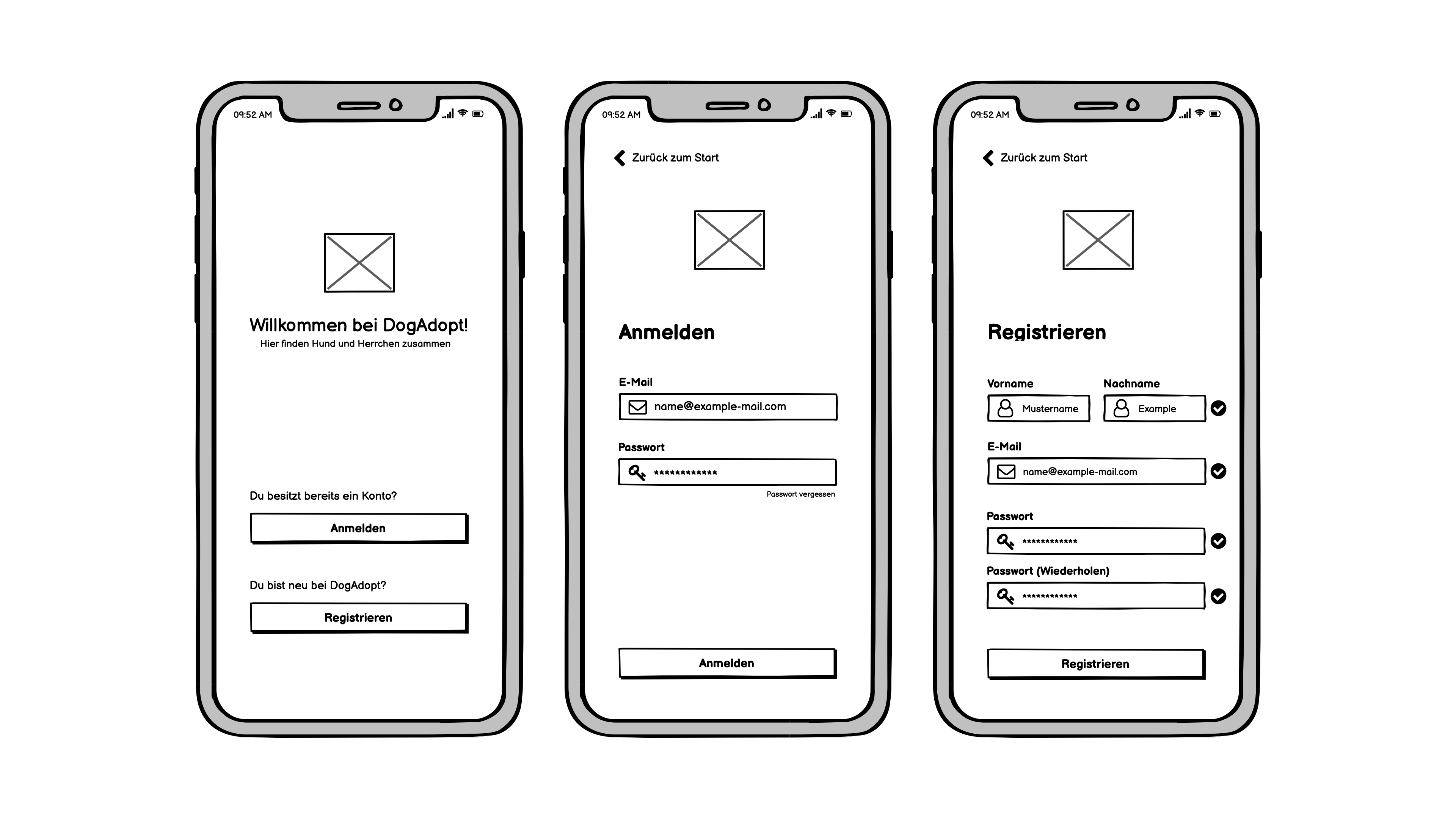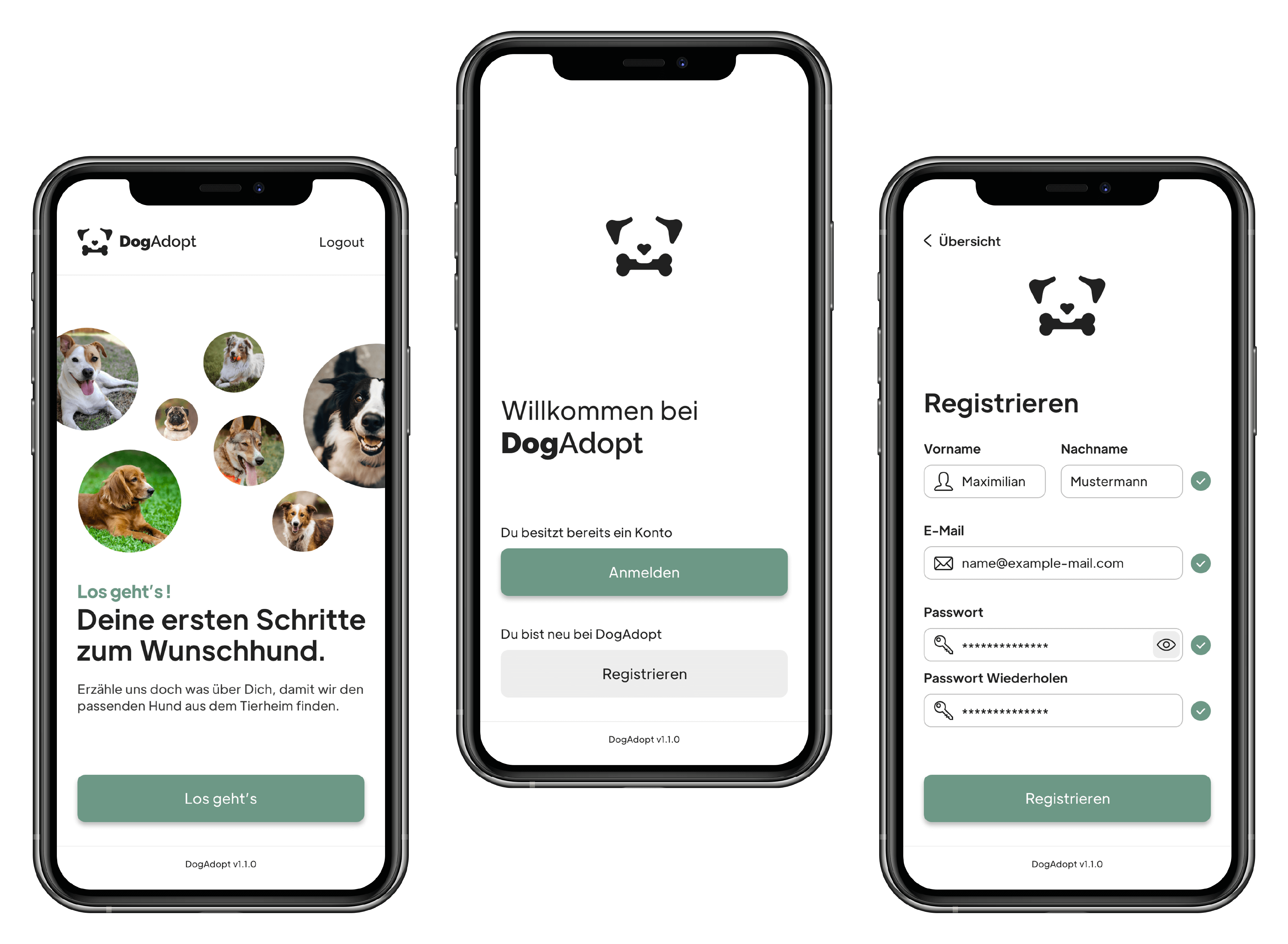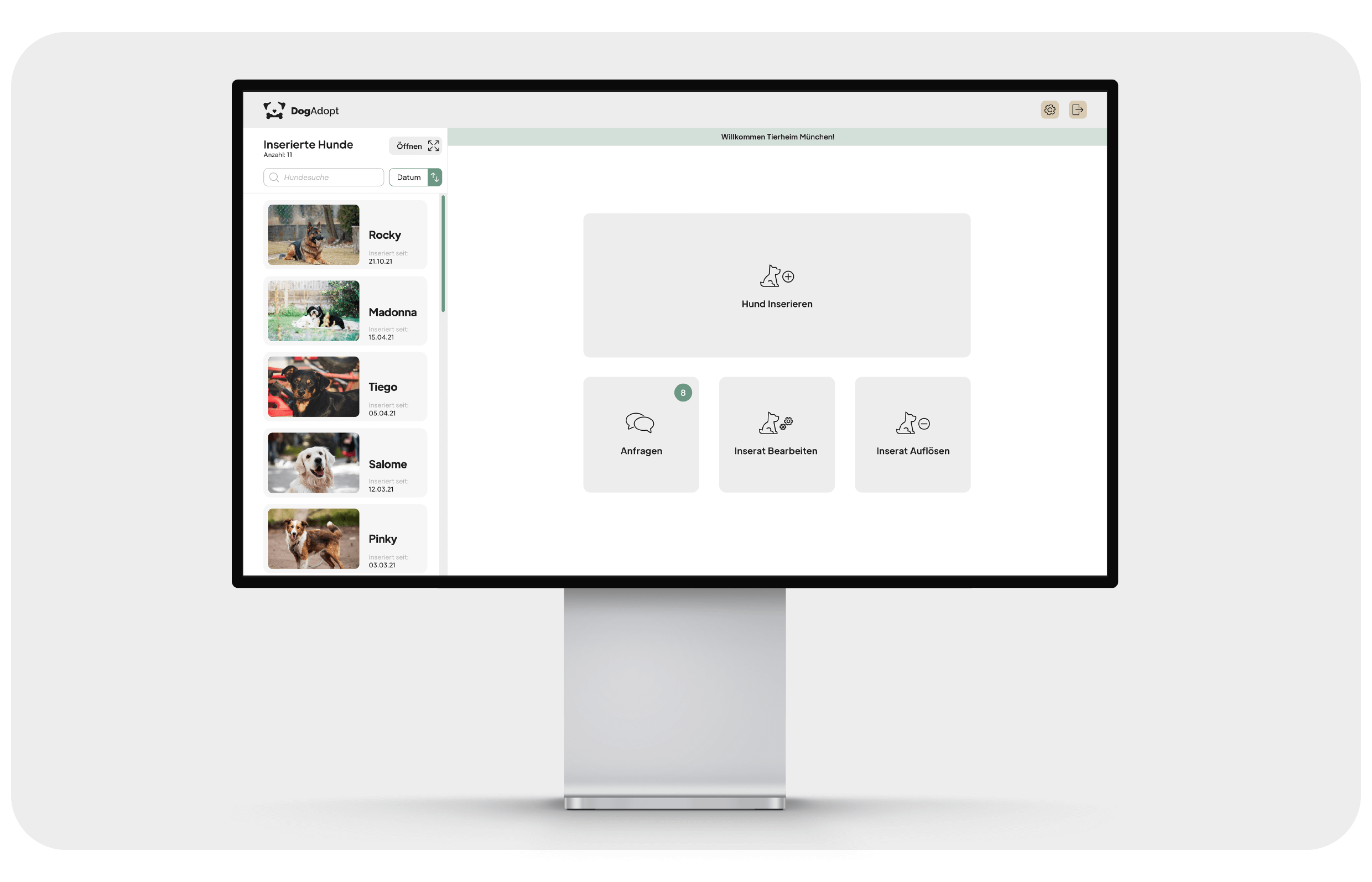DogAdopt: Your perfect dog is just a match away
My Role: This project was created as part of my Bachelor's final thesis and all work was carried out by me. The scope of the tasks included research, field visits, expert interviews, conception, design, prototyping and usability testing.
In Cooperation With: Tierschutzverein München e.V.
Used Tools: Adobe XD, Illustrator, Photoshop, InDesign, Balsamiq and Google Forms
Duration: 1 Semester

































